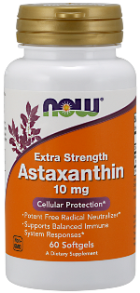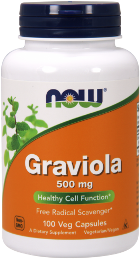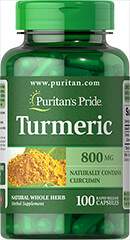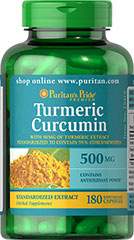1 - Vitamin A - Axerophtol, retinol, retinol
2 - Vitamin B1 - Aneurin, thiamin
3 - Vitamin B2 - Lactoflavin, vitamin G, riboflavin
4 - Vitamin B3 - Vitamin PP, Vitamin B5, Niacin
5 - vitamin B5 - Vitamin B3, pantothenic acid
6 - Vitamin B6 - Adermin, pyridoxol, pyridoxine, pyridoxal and pyridoxamine
7 - Vitamin B7 - Vitamin H, I or vitamin Bw, Biotin
8 - Vitamin B9 - Vitamin M or Vitamin Bc folic acid,
9 - Vitamin B12 - Erythrotin, cobalamin
10 - Vitamin C - ascorbic acid
11 - Vitamin D - Calciferol
12 - Vitamin E - Tocopherol
13 - Vitamin K - phylloquinone and menaquinone
Vitamins information:
Vitamins are organic compounds needed by the organism as a fuel, but for other vital functions, but can not synthesize the metabolism for the most part. They must therefore be taken with food. Some vitamins are supplied to the body as a precursor (pro-vitamin), which the body converts it first into the active form. Fat-soluble vitamins are divided into (lipophilic) and water (hydrophilic) vitamins.
In different organisms different substances are vitamins. For example, pigs can produce about 100 mg vitamin C / kg body weight, people can not because of the absence of L-Galactonolacton oxidase. Thus vitamin C is not a vitamin for pigs.
Generally, only the vital substances as vitamins for men are called. But even with the necessary vitamins for humans, there is an exception which is not really a vitamin. This exception is Vitamin D. The body itself is in fact able to produce vitamin D, provided it receives sufficient sunlight.
Water-soluble vitamins
Vitamin C, Vitamin B1, Vitamin B2, niacin (nicotinic acid, vitamin B3), pantothenic acid (Vitamin B5), vitamin B6, biotin (vitamin B7, vitamin H) Vitamin B9 (folic acid), vitamin B12
Water-soluble vitamins are absorbed in the small intestine by carriers or receptors. While vitamin B2 can be absorbed through passive transport, the absorption of vitamin B1, vitamin B12 and vitamin C is active.
The water-soluble vitamins are precursors of coenzymes or prosthetic groups of various enzymes.
In the table below are just some examples of the occurrence and effects of vitamins called
Fat-soluble vitamins
Vitamin A, vitamin D, vitamin E, vitamin K
History vitamins
After reading an article of the Dutch doctor, Christiaan Eijkman are employed by the Polish biochemist Casimir Funk in 1912 intensively with the isolation of the drug against the disease beri-beri vitamin, a hitherto unexplained new disease, which occurred in Japan, and Java. Eijkman was observed in a military hospital in Batavia, in addition patients (prisoners) and personnel as the chickens in the yard of the hospital, the symptoms of the disease beri-beri (to German: sheep showed Gang).
Because the chickens were fed recently with the same white, milled rice as the patients and staff, instead of the current with brown rice. Beri-beri was accompanied by paralysis and loss of strength. This disease occurred only after they had been introduced in these countries, European rice husking machines. It was suggested a deficiency disease. Casimir Funk isolated from rice bran, a substance that could cure the deficiency disease
Between 1920 and 1980 today (2004) known vitamins were first prepared pure. For now these vitamins and chemical synthesis routes are known. Diseases as a result of vitamin deficiency, were only the beginning of the 20th Century recognized.
In 1913, the name of the vitamins in large letters of the alphabet by the American biochemist Elmer McCollum was introduced Vermon. Thus, there was a vitamin A, B, C and D were then add to that vitamins E and K. In the analysis of food that contains Vitamin B, it turned out that this was anything more than one factor that could turn off more of the symptoms. Thus spoke the biologists of vitamin B1, B2, etc.
Vitamins and job function
Vitamins provide in principle for the functioning of metabolism. Your task is to regulate the recycling of nutrients such as carbohydrates, proteins and minerals, they provide for their ex-or conversion and thus also serve the energy. Vitamins boost the immune system and are indispensable in building cells, cells, bones and teeth. Each vitamin, with certain tasks. They also differ in terms of their different effects.
Vitamins appointment:
The Polish biochemist Casimir Funk, adopted in 1912 that all vital substances containing an NH2 group. He therefore coined the term "vitamin" (from Latin vita for life and for nitrogenous amine).
Subsequent studies showed, however, that are by far not all vitamins amines or contain other basic nitrogen atoms. Good examples of the vitamin A (retinol), a nitrogen-free, unsaturated alcohol, and the vitamin C (ascorbic acid) are,
Besides the chemical structure that gives the name of the vitamin are also letters, combined with a number designation, and trivial names used are 13 vitamins essential vitamins as:
Vitamins Description
Vitamins are scientifically not chemically uniform group of substances. They are organic compounds regulate the biological processes in the human (and animal) body. Include vitamins, minerals and trace elements as well as to the non-energy-supplying nutrients that the body needs to maintain his life and his performance absolutely.
Since it concerns with the vitamins to rather complicated organic molecules, they come in inanimate nature, not available. Vitamins must be formed only from plants, bacteria or animals. Man is, with few exceptions, where he can produce certain vitamins themselves, dependent on the dietary intake. Vitamins are essential substances, which means that they are to maintain health and performance of the human organism to life. Some vitamins are supplied to the body as a precursor (pro-vitamin), which are only converted in the body in the corresponding active form
The letter designation for the vitamins:
Vitamins are chemical compounds in very small quantities needed. Exception is vitamin C, the daily requirement is about 75mg per day. Vitamins are installed in coenzymes and cause an acceleration of metabolism (catalytic function). Under normal eating habits take vitamin deficiency diseases (scurvy in vitamin C) or (rickets in vitamin D) is a rare case. Vitamin deficiency diseases tend to occur as a result of an unbalanced diet. More commonly, however, to hypovitaminoses, in which, relative deficiency without disease states. At high physical activity, this is the case of vitamin B group often the case. Vitamins are distinguished in terms of their water solubility.
The water-soluble vitamins include:
* Of vitamin A (retinol) is found in fruits, vegetables and milk and is considered part of the visual purple. Vitamin A is stored and used to adjust the eye to different levels of brightness.
* Vitamin E (tocopherol) belongs as well to the group of antioxidants vitamin C and is contained in cereal grains, and fruit. Vitamin E serves as a protective function against unwanted oxidation, can destroy the cell and vessel walls. Unproven is the effect of increasing fertility and reduce aging. Vitamin E is often taken by athletes.
* Vitamin D (Kalziferol) is contained in egg, milk and cod liver oil. It is used in the regulation of phosphate and calcium metabolism and affects the mineralization of bone. Deficiency cause osteoporosis, especially among children.
* Vitamin K (phylloquinone) is present above all in green vegetables and tomatoes and effect of improved blood clotting. It stimulates the liver to form Prothrobin. If deficiencies it will be a delayed clotting.
The water-soluble vitamins do not include:
* Vitamin B (B1, B2, B6, B12, biotin, folic acid) are found in grains, yeast, protein, liver. Vitamin B1 is included in the degradation of glucose. A deficiency causes increased lactate levels and decreased performance under load. Vitamin B2 is responsible for the aerobic metabolism. Vitamin B6 in the formation of sugar, hemoglobin, and involved, and Myoglobinbildung. A deficiency of vitamin B6 causes anemia and thus reduced performance. Vitamin B12 is responsible for the fat, and carbohydrate metabolism and helps in the formation of red blood cells. Deficiencies are dangerous blood poverty.
* Vitamin C, or ascorbic acid may be referred to only very limited and is stored for bone formation, construction of connective tissue and wound healing important. Vitamin C is responsible for iron absorption in the intestine, tannins from tea and coffee inhibit this recording. A performance-enhancing, as well as increased resistance to infection is still not proven by the supply of Vitamin C. The daily dose of 200 mg - 400. Include vitamin C is mainly fruit and vegetables. A lack of vitamin C is especially noticeable when gums bleed.
Minerals:
Among the minerals needed:
* Cations (sodium, potassium, calcium, magnesium, iron, manganese, Kabalt, zinc and copper)
* Anions (Phostphat, chloride, fluoride and iodide)
Minerals needed to be distinguished in their concentration
Volume elements
Calcium, sodium, potassium, and magnesium, and phosphate and chloride are at a daily dose of about 50mg per kilogram of body weight is very high. The minerals account for 5% of body mass. Sodium and chloride are outside the cell, potassium and phosphate are available within the cell. There they are responsible for the excitation of nerve transmission, as well as osmotic pressure and water balance of the cells. Other ions fulfill specific functions. Phosphate is a component of adenosine triphosphate and therefore necessary for the provision of energy. Magnesium is one of the most important minerals and is part of enzymes for energy transmission to the muscle cells and thus to induce a muscle contraction. Physical activity is increased by magnesium was added in the muscle cell and through the sweat excreted. A magnesium deficiency increases the permeability of the cell wall enzymes which leave the cell. The performance drops and magnesium must be taken. Calcium is a 50% component of bone. Because of the increased loss of minerals, the need for athletes is significantly higher.
The low concentration of minerals are called trace elements.
The most important iron count as part of the red blood cells. Iron deficiency can therefore lead to anemia. Iodide is a component of thyroid hormones and fluoride is necessary for the dental, and bone formation.
Dietary Fiber:
Dietary fiber can not be digested and are included primarily in plant foods. The fibers include, pectin. Lignin and cellulose. They are energetically not relevant and provide only the water-binding effect for regulated intestinal activity. In addition, fiber lead to a faster saturation occurring. The recommended daily dose is around 30g per day. The actual intake, however, is usually clear underneath. It contains fiber in fruits, vegetables and whole grains.



















